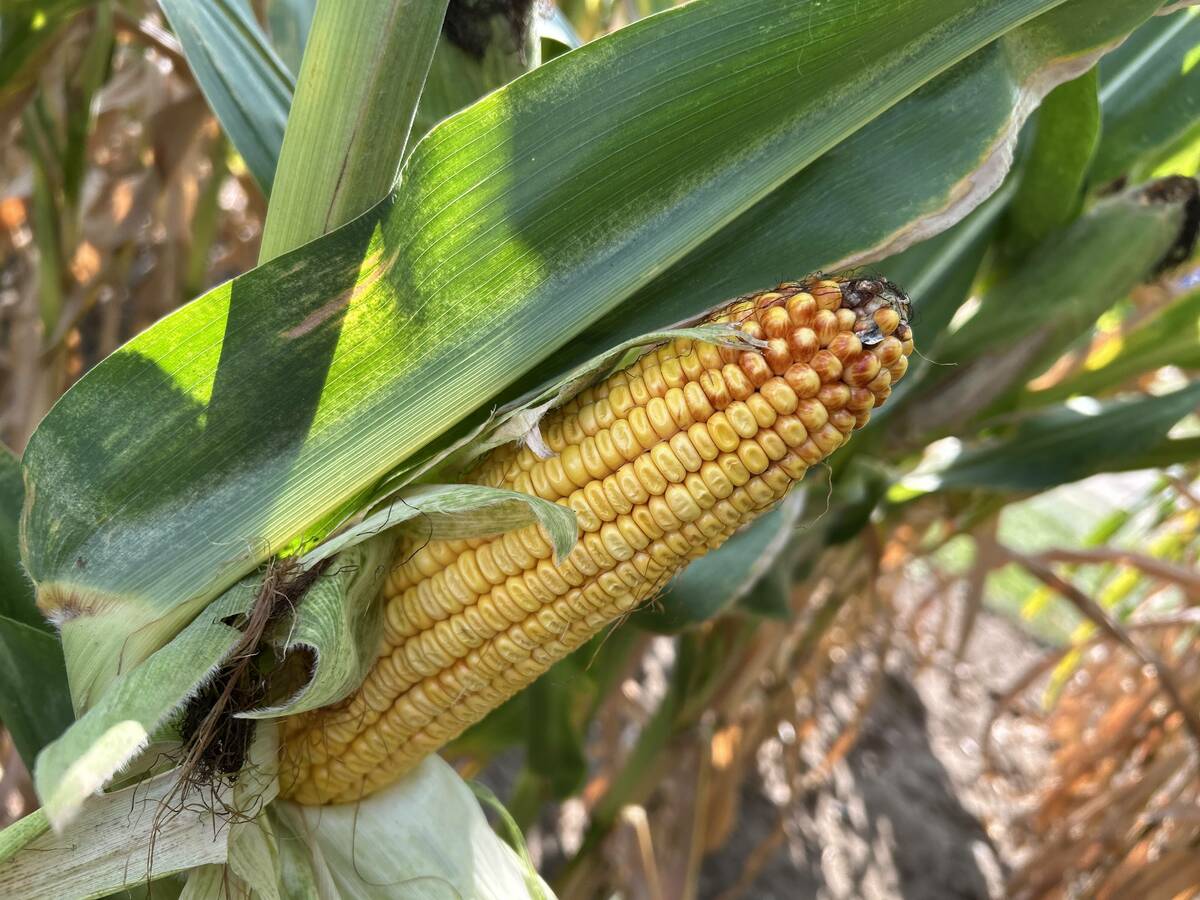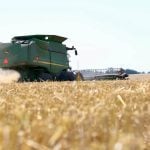Cows are milked on their own schedule
The collapse of a dairy barn roof two years ago could have been an easy exit for the Crozier family’s dairy farming business.
The farm is surrounded by houses, Edmonton is clearly visible from the barn and land developers are snapping up surrounding farmland.
Instead, the family worked with its insurance company and built a state of the art 160-cow dairy barn. They plan to keep milking cows for the next 20 or 30 years in the same location they have farmed for more than 110 years.
Read Also

Crop estimates show mixed results
Model-based estimates used by Statistics Canada showed the 2025/26 crop year has seen increases in canola, corn for grain, oats and lentils production while seeing dips in spring wheat, durum wheat, soybeans and barley in comparison to 2024/25.
“Things are good for 20 years. The city will keep on moving,” said Lenard Crozier, whose family runs Cheslen Dairies near of St. Albert, Alta.
“It’s interesting living in the shadow of a city.”
The new barn is different from the traditional dairy barn it replaced. It features three robotic milkers, an automatic feeding system, automatic gates that direct cattle to different sections of the barn, regulated calf feeders and curtains on the walls that rise or drop to let in fresh air.
Cows are milked an average 2.7 to 2.9 times a day, with some of the high producing cows lining up to be milked by the robot four times a day.
The animals receive a treat of steam rolled dairy ration during milking to help train them to go into the robotic milker.
Increased milking has boosted production 10 percent since the move into the new barn four months ago.
The robots milk the 160 cows 500 times throughout the day and night. A message is sent to the Croziers’ telephone if a cow isn’t milked for 12 hours.
Automation allows cows to eat when they want, lie down and be milked on their own schedule.
The family has noticed that a sense of peace and quiet has come over the cows without staff chasing them into the milking parlour twice a day.
“In the parlour system, we were always getting them up,” said Crozier’s son, Jason, while reprogramming the automatic manure scraper to scrape the aisle more often and keep the animals manure free.
“We don’t chase them any more, and humans walk twice as fast as a cow. Here they are at their own pace.… It’s a very quiet atmosphere.”
Lenard Crozier said the change in the dairy business has been significant since robots began milking cows round the clock. Staff no longer need to get up in the middle of the night to milk cows.
“The tasks have changed,” said Crozier. “It’s almost a one man barn.”
Times have changed since Crozier took over the dairy business from his parents in the late 1960s and early 1970s. His father milked 30 cows and was tired of the business. Lenard took over just as Alberta became part of the national supply management system.
“I have ridden the wave of the supply management system for 40 years,” said Crozier, who also farms with his son, Brett.
“It’s given good stability and the timing was right. It allowed for 40 years of fairly good stability.”
Crozier became involved with dairy politics because of his belief in supply management.
“I got interested and got involved and enjoyed very much working with people who had common interest,” he said.
“I feel very strongly about the system.”
He served on the Alberta Milk Producers Promotion Committee and the Dairy Bureau of Canada, helped formed the Prairie Milk Marketing Partnership and was involved in the privatization of the Alberta Dairy Herd Improvement and milk recording systems.
In November, Crozier was awarded the Dairy Industry Achievement Award for his contributions to the industry.














